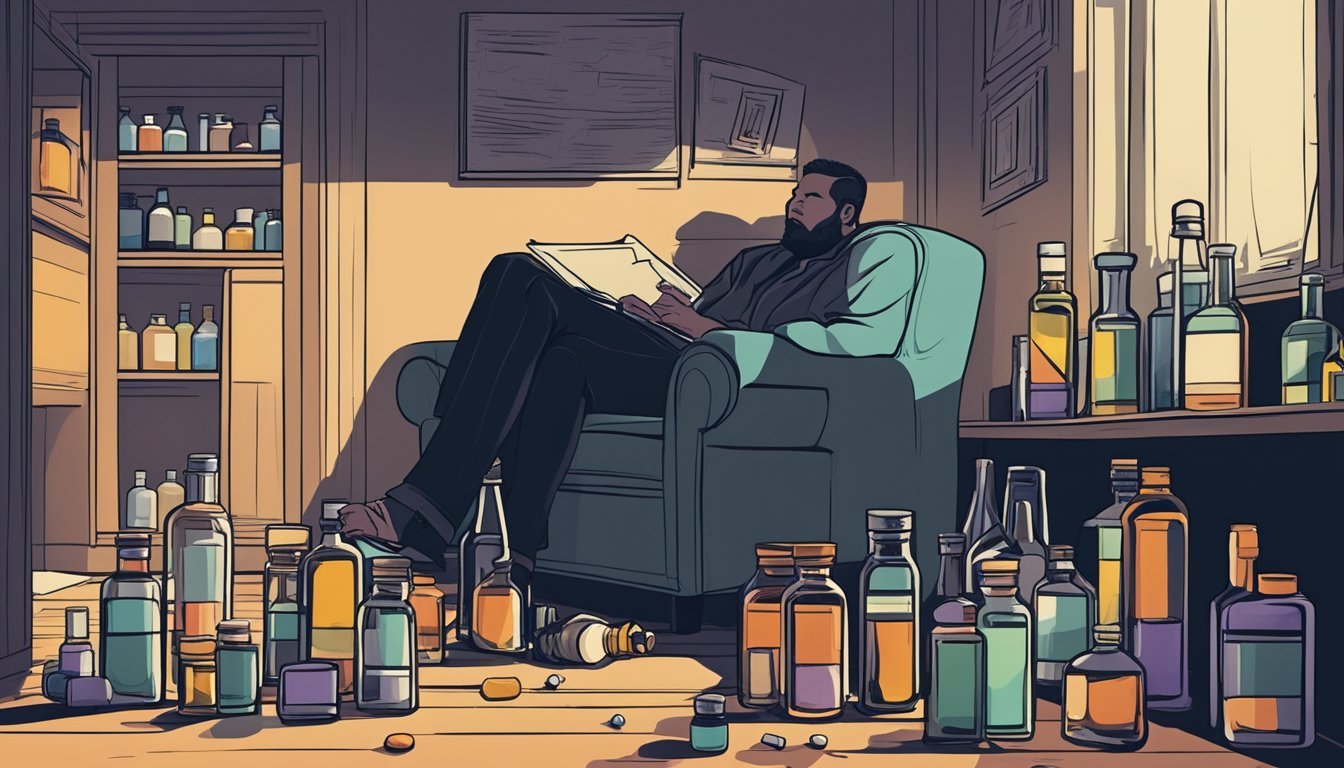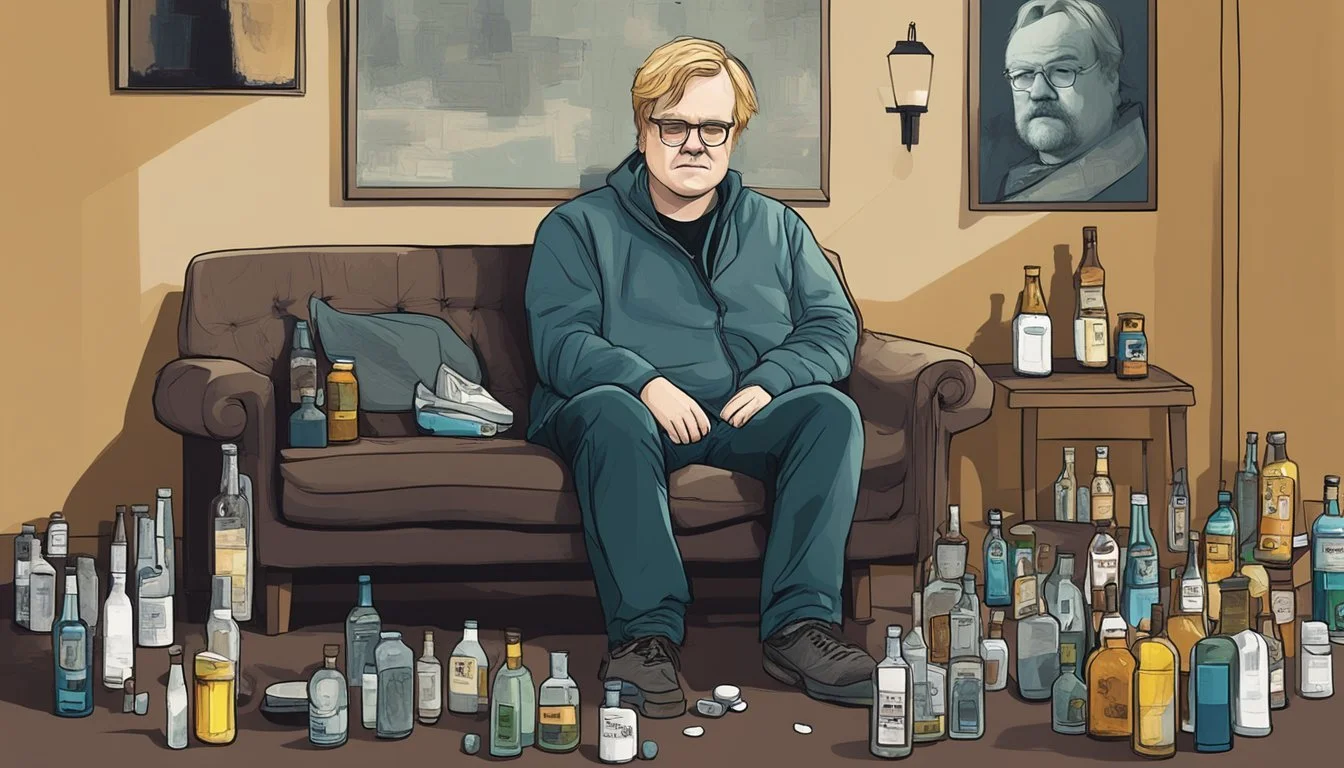Oscar Winner's Ordeal: Philip Seymour Hoffman's Battle with Addiction and Depression
A Look at the Actor's Struggles
Philip Seymour Hoffman was a celebrated actor known for his intense, nuanced performances. He won critical acclaim and numerous awards throughout his career, including an Academy Award for Best Actor for his portrayal of Truman Capote in the 2005 film "Capote."
Despite his professional success, Hoffman struggled with personal demons, battling addiction and depression for much of his adult life. His substance abuse issues began in his early twenties and resurfaced later in life, leading to periods of rehab and recovery.
Hoffman's story highlights the complex relationship between artistic brilliance and inner turmoil. His untimely death in 2014 at the age of 46 shocked the entertainment industry and fans worldwide, serving as a stark reminder of the devastating impact of addiction, even on those who seem to have it all.
The Rise of an Oscar Winner
Philip Seymour Hoffman's journey to the pinnacle of acting success was marked by powerful performances and a remarkable ability to embody complex characters. His versatility and dedication to his craft earned him critical acclaim and numerous accolades.
Critical Acclaim and Notable Roles
Hoffman's breakthrough came with his role in "Capote" (2005), where he portrayed writer Truman Capote. This performance earned him an Academy Award for Best Actor. He also received critical praise for his work in "Doubt" (2008) and "The Master" (2012).
Hoffman's talent shone in films like "Charlie Wilson's War" and "The Savages." His portrayal of Lester Bangs in "Almost Famous" (2000) demonstrated his ability to steal scenes even in supporting roles.
On Broadway, Hoffman earned Tony nominations for his performances in "True West" and "Death of a Salesman," showcasing his range as a stage actor.
Exploration of Complex Characters
Hoffman was known for his dedication to exploring the depths of his characters. In "Magnolia" (1999), he portrayed a compassionate nurse with nuance and sensitivity. His role as Lancaster Dodd in "The Master" showcased his ability to embody charismatic yet troubled individuals.
Hoffman's approach to acting involved intense preparation and a willingness to delve into the psychological complexities of his roles. He often chose characters that were flawed, conflicted, or struggling with internal turmoil.
His performances in both film and theater were characterized by a raw emotional honesty that resonated with audiences and critics alike. Hoffman's ability to bring depth and authenticity to his roles set him apart as one of the most respected actors of his generation.
Philip Seymour Hoffman's Personal Struggles
Philip Seymour Hoffman faced significant challenges in his private life, battling substance abuse and mental health issues. His struggles with addiction and the pressures of fame shed light on the complexities faced by many in the entertainment industry.
Private Battles with Substance Abuse
Hoffman's battle with addiction began in his early twenties. He initially sought treatment at age 22 and maintained sobriety for over two decades. However, in 2012, he relapsed after using prescription opioids. This led to a return to heroin use.
The actor entered rehab in May 2013. Despite efforts to regain sobriety, he was found dead in his apartment on February 2, 2014, from an apparent drug overdose. Toxicology reports revealed a mix of heroin, cocaine, benzodiazepines, and amphetamines in his system.
Hoffman's struggle highlights the chronic nature of addiction. Even after years of sobriety, the risk of relapse remained present.
Interplay of Fame and Mental Health
Hoffman's rise to fame brought both accolades and challenges. His intense commitment to acting roles often blurred the lines between his professional and personal life. This dedication, while contributing to his artistic success, may have exacerbated his mental health struggles.
The pressures of maintaining a high-profile career in Hollywood likely added to Hoffman's stress levels. Constant public scrutiny and the demands of the film industry can take a toll on an individual's mental well-being.
Hoffman's partner, Mimi O'Donnell, noted changes in his behavior as he grappled with the demands of fame and his personal demons. These observations underscore the complex relationship between public success and private struggles.
The Final Chapter: Hoffman's Untimely Death
Philip Seymour Hoffman's life came to an abrupt end on February 2, 2014, in New York City. His death shocked the entertainment industry and fans worldwide, sparking discussions about addiction and mental health.
News Stories and Public Reaction
The news of Hoffman's death spread rapidly across media outlets. He was found unresponsive in his West Village apartment by a friend. Initial reports speculated about the cause, given Hoffman's history of substance abuse.
Fans and fellow actors expressed their grief and admiration for Hoffman's talent. Many praised his contributions to cinema and theater. Social media platforms were flooded with tributes and memories of his performances.
The public reaction highlighted Hoffman's impact on the arts. His death also renewed conversations about the dangers of addiction in the entertainment industry.
Clinical Details and Substance Analysis
The medical examiner's report revealed Hoffman died from acute mixed drug intoxication. The toxicology results showed a combination of heroin, cocaine, benzodiazepines, and amphetamines in his system.
Investigators found drug paraphernalia in Hoffman's apartment, including used syringes and prescription medication. The presence of these items indicated a relapse into active addiction.
Hoffman had been sober for over two decades before relapsing in 2012. He had sought treatment in 2013, but ultimately succumbed to his addiction.
His longtime partner, Mimi O'Donnell, and their three children were left to grapple with the loss. Hoffman's funeral was held on February 7, 2014, attended by family, friends, and colleagues from the entertainment industry.
The Cultural Impact of His Work
Philip Seymour Hoffman left an indelible mark on film and theater. His performances resonated with audiences and critics alike, earning him accolades and a devoted following.
Film and Theater Contributions
Hoffman's portrayal of Truman Capote in "Capote" earned him an Oscar for Best Actor. This role showcased his ability to completely transform into a character. He brought depth to complex roles, from a charismatic cult leader in "The Master" to a captivating music critic in "Almost Famous."
In "The Hunger Games" franchise, Hoffman reached a wider audience as Plutarch Heavensbee. His presence elevated the films, adding gravitas to the blockbuster series.
On stage, Hoffman's performances in productions like "Death of a Salesman" and "Long Day's Journey into Night" were equally powerful. He seamlessly transitioned between film and theater, demonstrating his versatility as an actor.
Remembering the Artist
Hoffman's sudden passing in 2014 shocked the entertainment world. Tributes poured in from colleagues and fans, highlighting his impact on the industry. Many praised his dedication to his craft and his ability to bring humanity to every role.
His legacy lives on through his body of work. Film schools study his performances, and aspiring actors cite him as an inspiration. Hoffman's commitment to authentic portrayals continues to influence actors today.
TV appearances, though less frequent, also showcased his range. His role in the miniseries "Empire Falls" earned him critical acclaim and further demonstrated his ability to captivate audiences across mediums.
The Ongoing Conversation: Addiction in Hollywood
Addiction remains a pressing issue in the entertainment industry. High-profile cases like Philip Seymour Hoffman's have sparked important discussions about substance abuse and recovery in Hollywood.
Addressing Substance Abuse in the Arts
The prevalence of addiction among artists and performers has led to increased awareness and action within the industry. Many studios now offer wellness programs and confidential support services for employees struggling with substance abuse.
Organizations like the Actors Fund provide resources specifically tailored to those in the entertainment field. These include counseling, intervention services, and referrals to treatment centers experienced in working with public figures.
Some production companies have implemented drug testing policies and sobriety clauses in contracts. While controversial, proponents argue these measures help create safer work environments and encourage accountability.
Support Systems and Recovery Narratives
Peer support groups play a crucial role for many in the industry seeking sobriety. Narcotics Anonymous meetings catering to entertainment professionals offer a sense of community and understanding.
High-profile figures in recovery often become advocates, using their platforms to reduce stigma. Robert Downey Jr. and Drew Barrymore have spoken openly about their journeys to sobriety, inspiring others to seek help.
Industry events like the Annual Reel Recovery Film Festival showcase films addressing addiction and mental health. These platforms help normalize conversations around substance abuse and highlight paths to recovery.
Sober living communities designed for those in entertainment have emerged in Los Angeles and New York. These provide structured environments for maintaining sobriety while navigating career pressures.
Continuing Hoffman's Legacy
Philip Seymour Hoffman's untimely death sparked initiatives to address addiction and mental health issues in the entertainment industry and beyond. His family and colleagues worked to honor his memory through education and research efforts.
Educational Programs and Awareness Initiatives
The Hoffman family partnered with several organizations to launch addiction awareness programs. These initiatives targeted schools, community centers, and media outlets to provide accurate information about substance abuse risks.
Mimi O'Donnell, Hoffman's longtime partner, became an advocate for families affected by addiction. She shared her experiences to reduce stigma and encourage open conversations about mental health.
The Labyrinth Theater Company, where Hoffman was a member, created acting workshops for at-risk youth. These programs aimed to channel creative energy positively and build self-esteem.
Advancements in Addiction Research
Hoffman's death highlighted gaps in understanding addiction mechanisms. This led to increased funding for neuroscience studies exploring the brain's reward pathways and potential treatments.
Research teams at major universities focused on developing new medications to manage cravings and withdrawal symptoms. Clinical trials tested innovative therapies combining pharmaceutical and behavioral approaches.
The Philip Seymour Hoffman Foundation supported grants for scientists studying the genetic factors influencing addiction susceptibility. This research aimed to identify individuals at higher risk and tailor prevention strategies accordingly.
Conclusion
Philip Seymour Hoffman's struggle with addiction cast a shadow over his remarkable career. Despite his immense talent and critical acclaim, he battled inner demons that ultimately led to his untimely death.
Hoffman's journey highlights the complex nature of addiction. Even after years of sobriety, relapse remained a constant threat. His story serves as a stark reminder of addiction's power to affect anyone, regardless of success or status.
The actor's legacy extends beyond his performances. His openness about his struggles raised awareness about addiction and mental health issues in the entertainment industry. Hoffman's honesty encouraged others to seek help and speak out.
While his life ended tragically, Hoffman's impact on cinema and theater endures. His dedication to his craft and fearless portrayals continue to inspire actors and filmmakers. His work remains a testament to his extraordinary abilities and passion for storytelling.
Hoffman's battle with addiction underscores the importance of continued support and treatment for those in recovery. His story emphasizes the need for compassion and understanding towards individuals struggling with substance abuse and mental health challenges.




